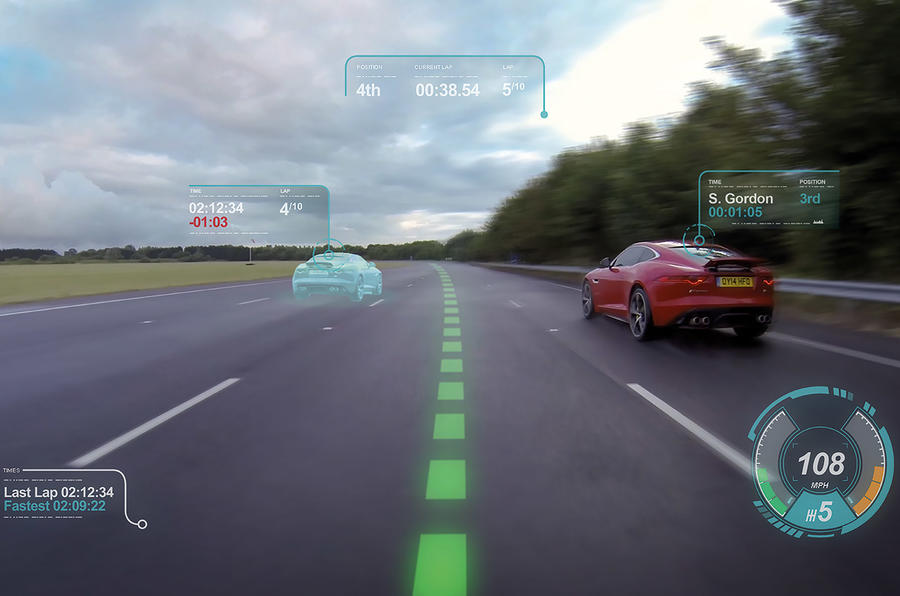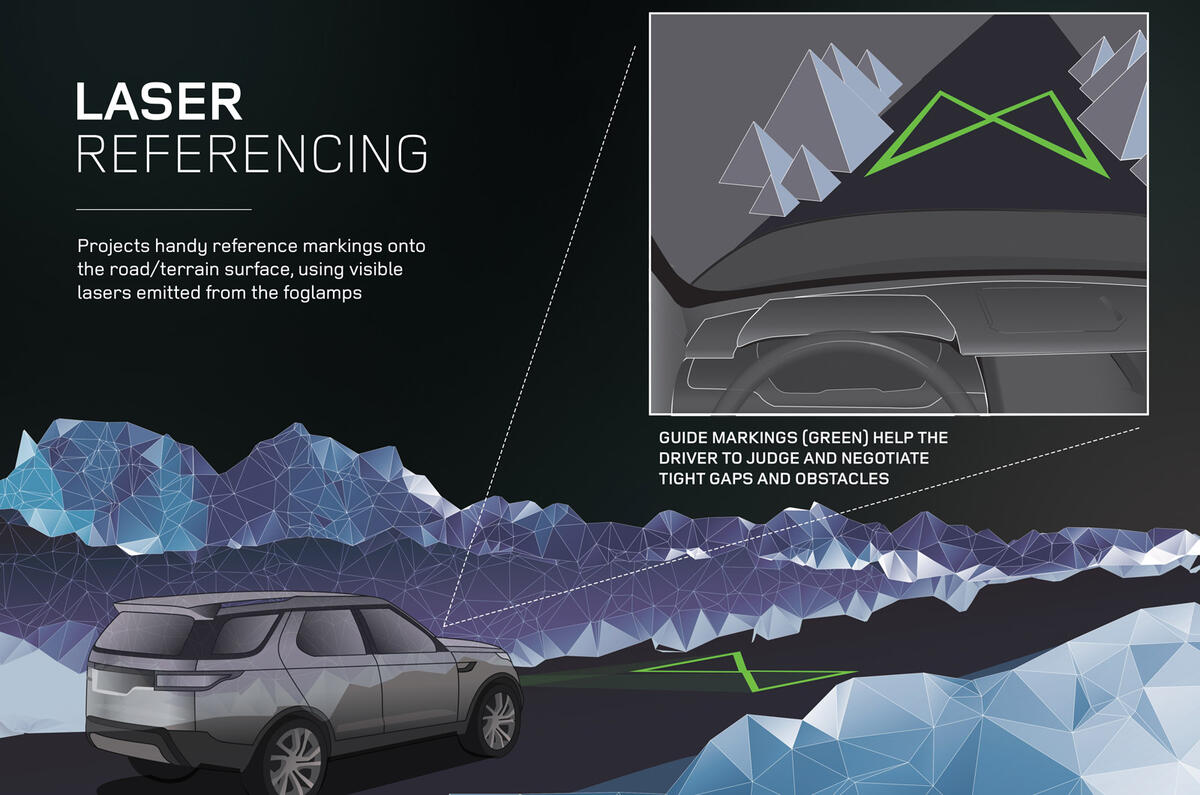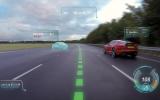Jaguar Land Rover has revealed some of its future technologies, which could usher in the end for conventional instrument packs and conventional headlights.
Displayed at its research and development centre in Gaydon, Warwickshire, the company says it is working on ‘virtual windscreens’ and a new lighting and vehicle guidance system powered by lasers.
Research engineer Paul Widdowson demonstrated JLR’s advanced work in using ‘structured light’ as a way of both projecting images onto the road surface and for mapping the topography rough ground ahead of the car.
JLR is experimenting with laser projections that lay down a grid or box shape that’s the same width as the vehicle on the road surface a few metres ahead of the car. This would allow the driver to judge the car’s width with extreme accuracy, a very useful benefit on crowded city streets.
These laser projections could also be used to project animated arrows on the road surface, showing a vehicle’s intent to make a turn more clearly than easily obscured indicator units. The ‘structured lights’ could also be used for working out the depth of water the driver is about to wade through as well as mapping off-road surfaces ahead of the vehicle.
In theory it could also be used on road surfaces to provide hyper-accurate information for an active suspension system. The accuracy of the information provided by laser projections also means that they can be used as safety sensors for parking or pedestrian avoidance.
Perhaps the most radical use for the new laser technology is a replacement for conventional headlamp units. The light beams – which are projected from tiny light units - are easy to place accurately, allowing, for example, road edges to illuminated without using a conventional high beams.
Because the light is sent from the power units along a fibre optic cable, future laser headlamps could be much small and less bulky than today’s units, opening the way for a significant shift in car design. Reducing the bulk of headlamp units could also improve pedestrian safety.
Widdowson revealed that his team is already talking to suppliers about prototyping the idea and getting enough power for 2500 Lumens in a package volume of around 0.5-litres.
The firm's new virtual windscreen technology enables various information to be projected on the screen, including sat-nav information, hazard warnings and most of the information that appears on conventional instrument packs.










Join the debate
Add your comment
One last hurrah for the driver
"Because the light is sent
They said that about LED lights and whats happened since their introduction ? The total opposite - headlights are bigger than ever and there are now usually loads of extra lights emblazoned on the front aswell, more often than not, large and tacky, in a few years I wouldnt be surprised if the entire front of a modern car had eveolved into one big light !
Solutions looking for a problem.